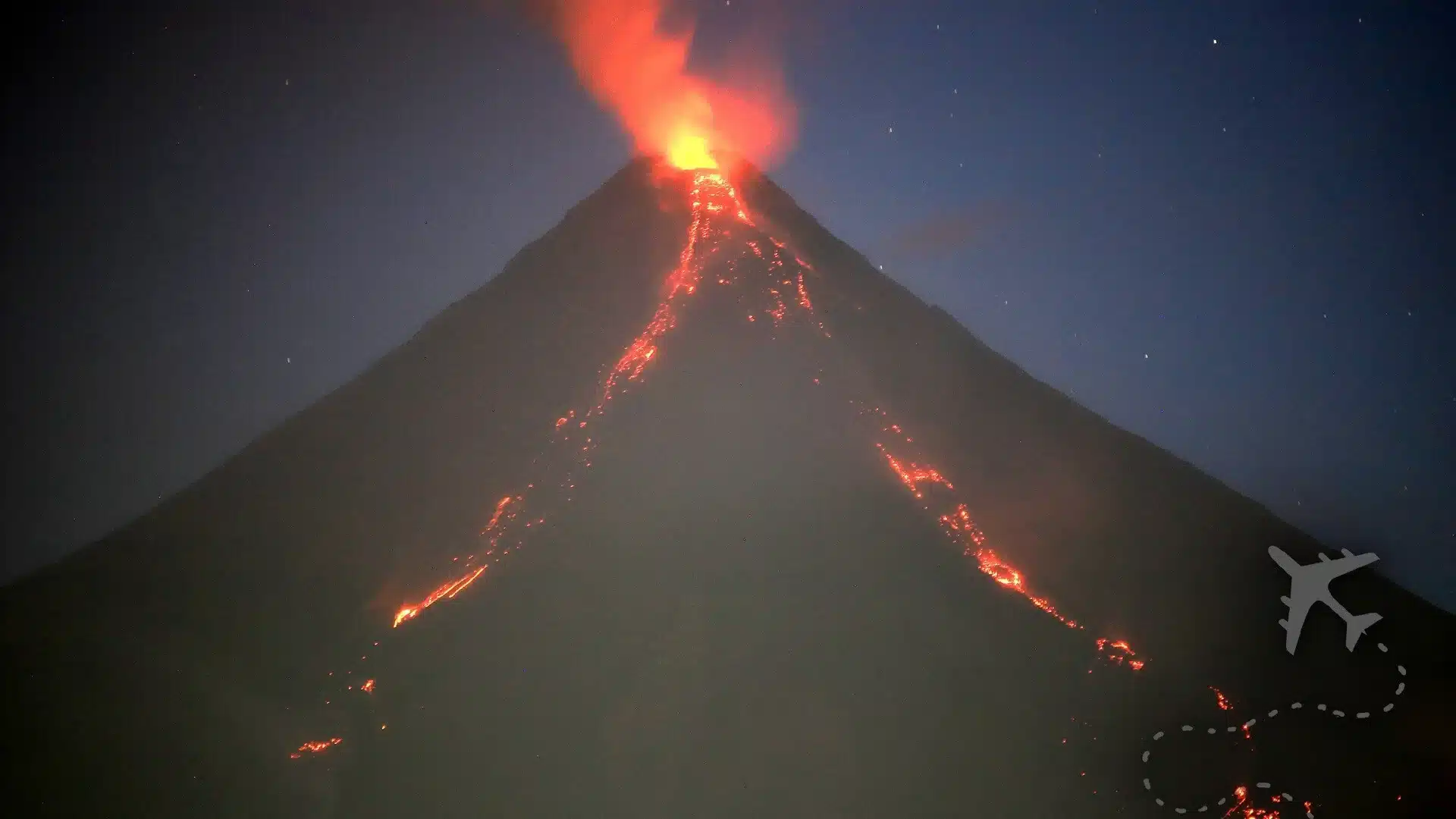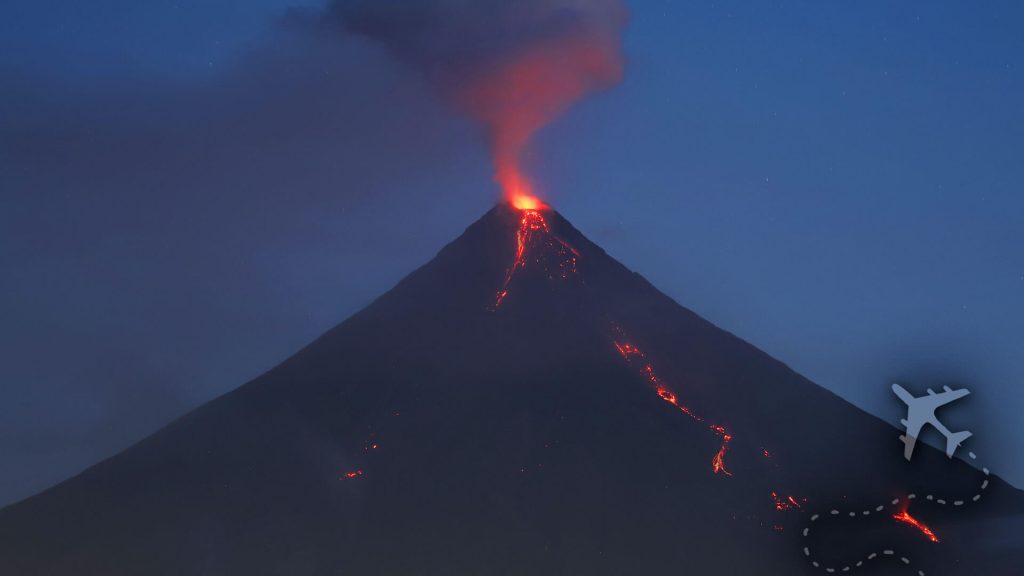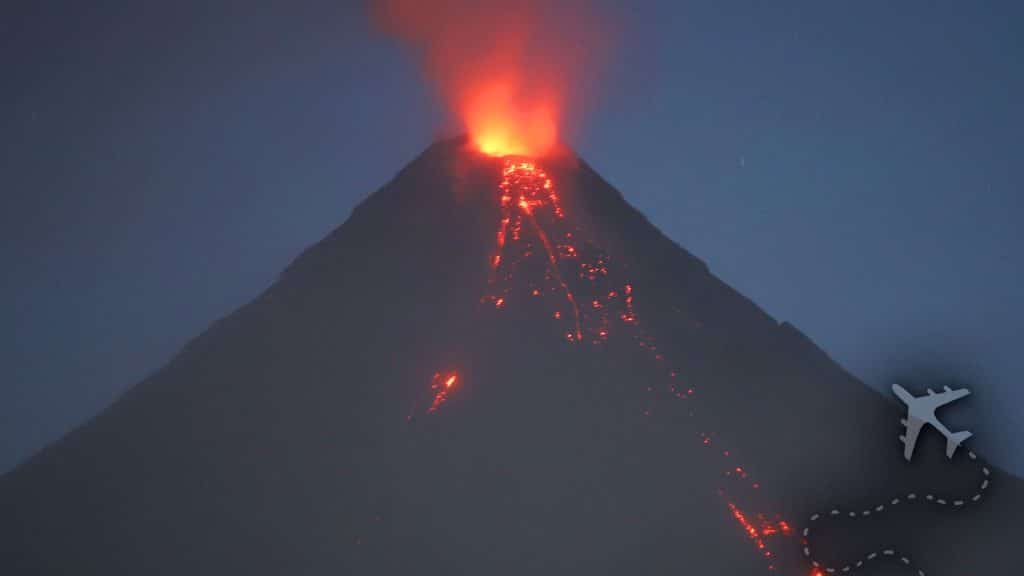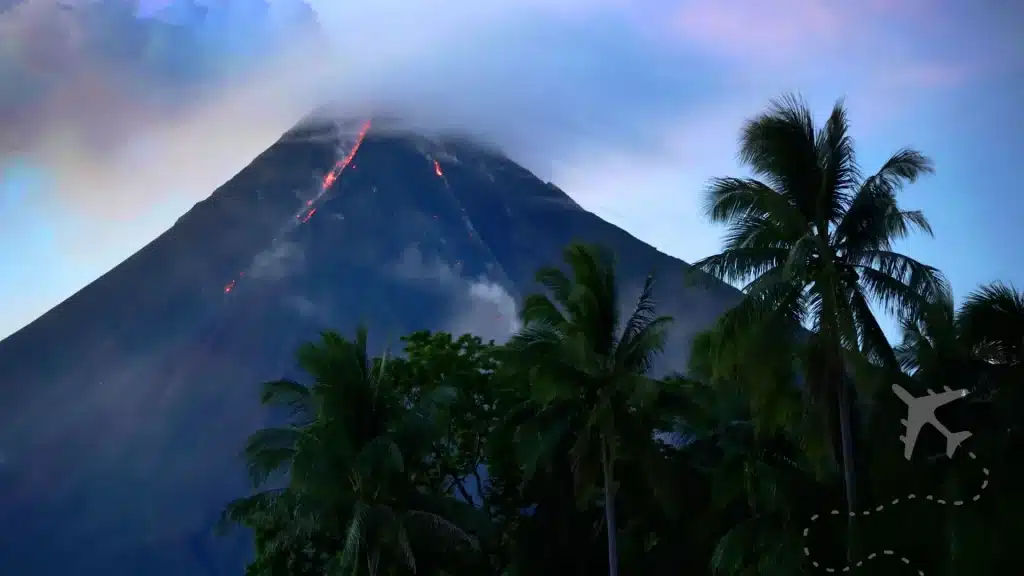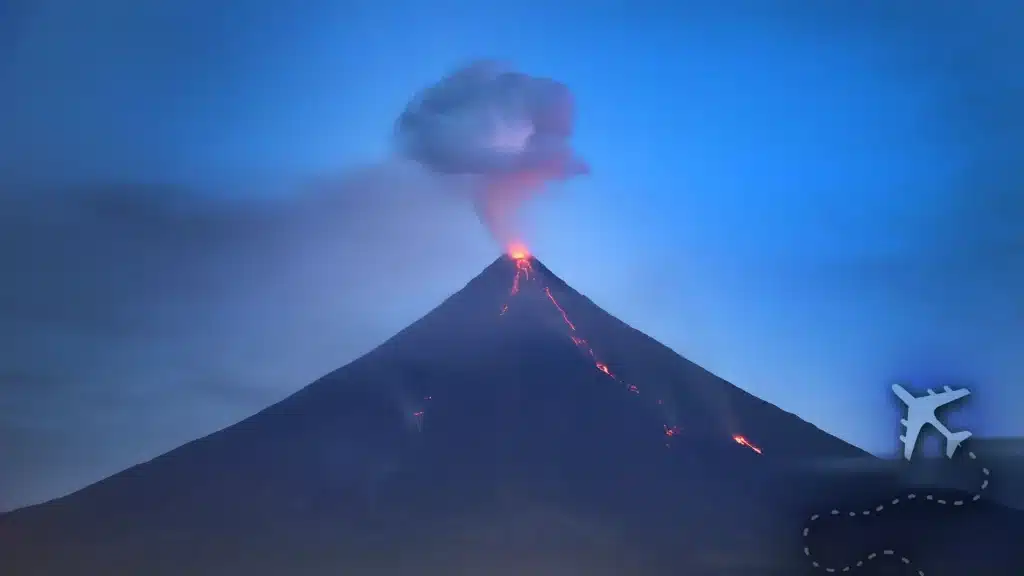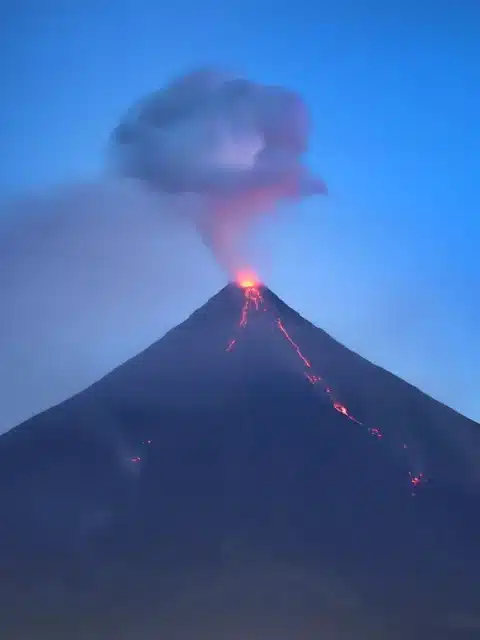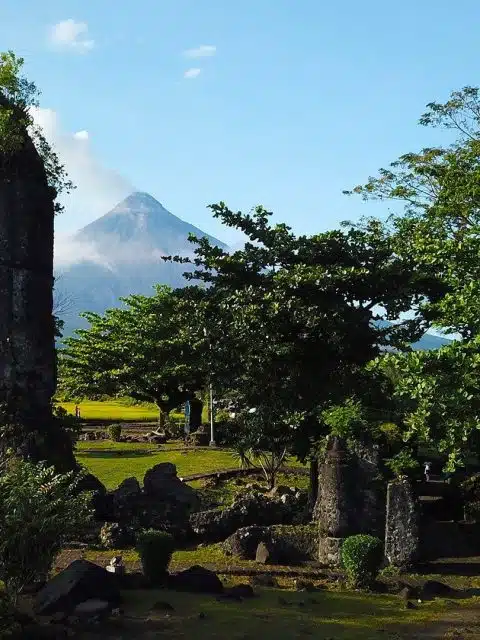For centuries, Mayon Volcano in the Philippines has mesmerized and terrified in equal measure. Its near-perfect cone shape piercing the sky makes it a geological masterpiece and a living reminder of the Earth’s immense power. But in 2018, Mayon reminded everyone that beauty can be deadly, unleashing an eruption that displaced thousands and painted a fiery picture of destruction across the Albay province.
DESTINATION: Mayon Volcano
CURRENT WEATHER
overcast clouds (23 C / 73 F)
![]()
AIR QUALITY INDEX (AQI)
Good (46)
A Brief History of Mayon
Towering at 2,462 meters, Mayon Volcano is the Philippines’ most active and iconic volcano, firmly rooted in the Pacific Ring of Fire, a volatile zone responsible for 75% of the world’s seismic and volcanic activity. This fiery giant, formed by the subduction of the Philippine Sea Plate beneath the Eurasian Plate, has erupted over 50 times in recorded history. Its first documented eruption was in 1616, and it has since become a symbol of beauty and danger.
Mayon is steeped in legend, its name derived from Daragang Magayon, a heroine in local folklore whose tragic love story is said to mirror the volcano’s perfect symmetry. Mayon is both a giver and a taker for the people of Albay; its fertile volcanic soil supports agriculture, but its eruptions occasionally bring devastation.
Among its deadliest eruptions was the 1814 event, which buried the town of Cagsawa under a torrent of lava, leaving behind the haunting ruins of Cagsawa Church, now a stark reminder of nature’s wrath. Framed by Mayon’s majestic yet menacing silhouette, these ruins have become a popular tourist attraction.
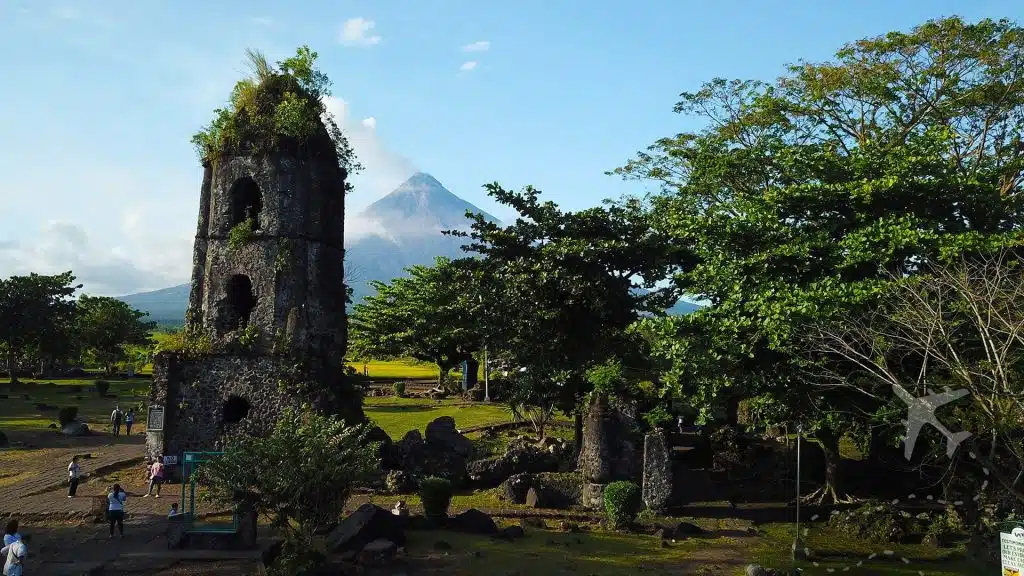
The communities around Mayon live with its fiery temperament, facing eruptions and lahars every few years since the 1800s. In 2008, a 20-meter-high lava flow came within 2 kilometers of nearby villages, a chilling reminder of the volcano’s persistent activity and its connection to the geological power of the Ring of Fire.
The 2018 Eruption: Mayon Awakens
January 2018 started with a bang – literally. Two lava collapses jolted the smoking stratovolcano back to life, with ash plumes shooting 10 kilometers into the sky and streams of lava spilling down the mountainside. Over 80,000 people were evacuated from the danger zone as pyroclastic flows (a deadly mix of hot gas, ash, and rock) barreled down the slopes.
The eruption lasted for weeks, creating surreal scenes of glowing rivers of lava against the dark silhouette of Mayon. For locals, it reminded them of their precarious coexistence with the volcano, while for adventurers and photographers, it was an opportunity to witness nature’s raw power.
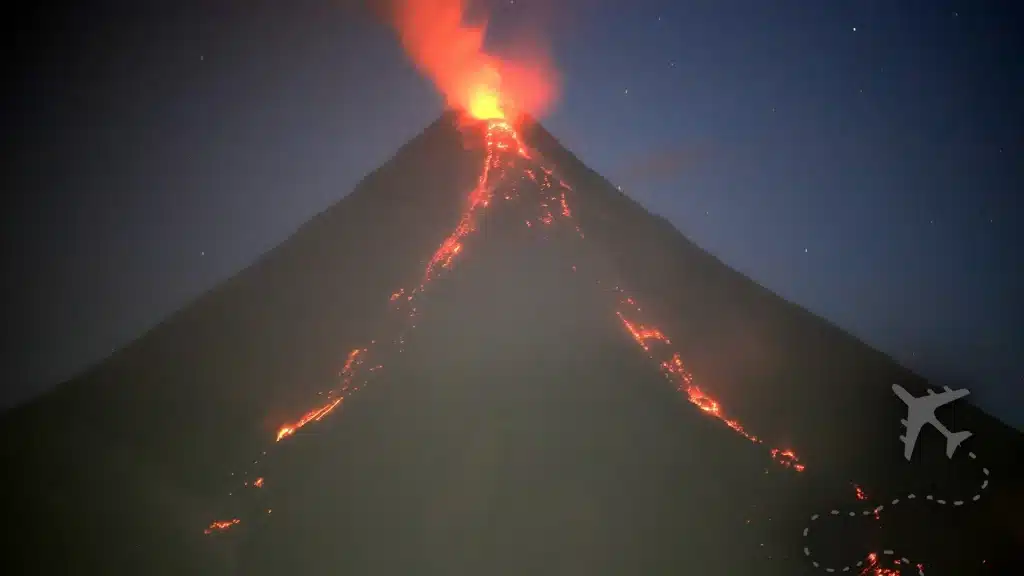
Mayon’s Cultural and Economic Importance
Mayon is deeply woven into the fabric of Albay’s culture and economy. Its fertile volcanic soil supports agriculture, particularly coconut and abaca plantations, staples of the local economy. The volcano’s iconic silhouette symbolizes resilience and pride for the Bicolano people, featured prominently in their festivals, dances, and cuisine.
Tourism thrives in the volcano’s shadow, with visitors flocking to explore its base and capture its picture-perfect form. The 2018 eruption, while devastating, also renewed global interest in Mayon, drawing attention to its awe-inspiring beauty and volatile nature.
A Volcano Adventure
Legazpi, a rural southern area of Luzon island, isn’t a tourist destination. For those wanting to visit Mayon or other destinations in the area, it is an 8-10 hour drive from Manila. If you rent a car, bring a shit-load of patience and dust off the life insurance policy because this is one of the most mentally challenging journeys you’ll ever take. The Philippine infrastructure (outside of Manila) is mostly single-lane roadways with huge potholes, dangerous curves, and mountain roads/bridges with no guard rails. Once there, the adventure begins:
1. Cagsawa Ruins Park: This iconic site offers a stunning view of the volcano, framed by the bell tower of the 1814 Cagsawa Church. It’s the perfect spot for dramatic photos and a sobering lesson in the volcano’s history.
2. Mayon Volcano National Park: Explore the lush trails at the volcano’s base. Guided ATV tours are popular, taking you closer to the lava flow remnants from the 2018 eruption.
3. Lignon Hill Nature Park: For panoramic views of th volcano and Legazpi City, hike up Lignon Hill. The sunsets here are unforgettable, with Mayon’s silhouette glowing in the fading light.
4. Daraga Church: This historic church, perched on a hill, offers another excellent vantage point for viewing Mayon. Its intricate Baroque architecture is a bonus.
5. Quitinday Green Hills: Dubbed the “Chocolate Hills of Albay,” these rolling mounds provide a unique perspective of Mayon. The contrast between the lush greenery and the volcano’s stark cone is mesmerizing.
Safety First
Mayon’s allure is undeniable, but safety should always come first. Check with local authorities about the current alert level before planning your visit, as the volcano is known for its sudden activity. Stay outside the six-kilometer Permanent Danger Zone and heed evacuation orders if necessary.
Mayon Uncensored: Is it Worth the Visit?
This volcano is not just a destination; it’s an experience. Mayon is a place where natural beauty and raw power converge, offering a connection to the Earth’s fiery heart.
Catching a glimpse of the eruptions can be challenging, especially at night, as clouds cover the summit, and the goddamn’ pollution there makes all of your photos hazy.
Hiking to the lava fields on the southern slope of Mayon is an experience like no other. You’ll need a GPS, solid hiking shoes, and water.
From the Helipad, you’ll get a 360-degree view of our tiny planet’s stunning beauty; if you’re lucky, you’ll hear the eruptions. I can’t accurately describe what it sounds like – All I know is that it is a sound I’ll never forget.
In Mayon’s shadow, life thrives, and stories are told. And if you’re the kind of traveler who seeks awe, respect, and a little adrenaline, Mayon is calling. Are you ready to answer?


